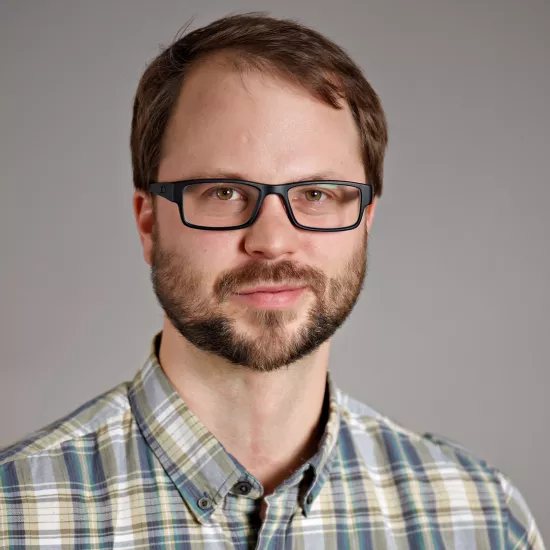Interview with Tong Lam, JHI Faculty Research Fellowship Recipient

Tong Lam is an Associate professor in the Historical Studies Department. He was awarded a JHI Faculty Research Fellowship for 2024–25 for his project, "Secrecy as Spectacle: Dust, Sand, and Cloud in China’s Atomic Age."
- How does this project relate to your previous research?
My research has always involved multiple strands. One of them is infrastructure and urbanism in the context of science and technology studies (STS). In recent years, I have published several articles about China’s uneven urban development, including its special economic zones. While these special zones are crucial to understanding China’s post-socialist economic development, the genealogy of these zones can be traced, in part, to earlier closed special zones, or secret cities, built as part of China’s Cold War mobilization. Therefore, even though the post-socialist period marks a radical departure from the socialist or communist era ideologically, there is a certain continuity in the logic of mobilization for production, development, and national security.
Another strand of my research has involved visual culture and media. The visual history of Chinese nuclear mobilization is rich yet understudied. For instance, in one of my undergraduate courses, The Politics of Asia-Pacific War Memory, I often expose students to the richness of what could be called atomic culture, including films, pop songs, and fictions inspired by and engaging with the nuclear Cold War in the United States and Japan. What has been routinely overlooked by scholars on this topic, however, is that there is also a rich trove of visual and material culture associated with China’s nuclear development. Obviously, in the Chinese context, these were created for political purpose rather than capitalist consumption. Still, differences in politics and ideology aside, the point is that the aesthetic dimension of the history of the nuclear Cold War is quite profound.
- What questions guide your study on the politics and poetics of mobilization in China’s special zones?
Existing research on the history of China’s nuclear development commonly comes from security studies and international relations (IR). Unsurprisingly, their focus is mostly geopolitics, which is generally quite human-centric. My research, instead, includes infrastructure, visual culture, and the interactions between humans and the environment. I am particularly interested in the politics and poetics of nuclear mobilization in China and beyond, examining not just the hardware of nuclear mobilization but also the often neglected “softer” side of the story that was quite instrumental to the process. For example, while China’s nuclear mobilization was secretive, it was also deliberately spectacular and theatrical in the sense that the party-state routinely regarded aesthetics, including the sublimity of nuclear mushroom clouds, as part of the everyday mobilization for workers inside these special zones as well as for the general population. Moreover, my interest in the “politics and poetics” question extends beyond Cold War mobilization during the socialist period. Part of my project is to use a lens-based method to document the landscapes of these decommissioned special zones. Although the “military and industrial heritage” of many of these places has been turned into tourist sites, residents living in these industrial wastelands continue to suffer from disinvestment and environmental hazards, much like many similar places outside of China.
- What do you mean by “lens-based methods” for your research? Can you explain your research-based visual art process?
The making of lens-based images—photography and videos—has been an integral part of my research process and findings. Being on-site, especially, allows me to make direct observations and speak with locals. These interactions often generate new questions that cannot be raised easily through secondary and archival materials. Finally, my visual approach allows me to place China in a larger global context. My lens-based approach, in particular, enables me to include nuclear and non-nuclear cities in the [sic. former] Soviet Union (Kazakhstan, Ukraine, Mongolia, etc.), the United States, and Canada. In so doing, it makes my project transnational in a productive way.
- How will this fellowship from the JHI support your research project?
The JHI residential fellowship will allow me to focus on my research and writing without distraction. It will also enable me to interact with fellows working on the annual theme: Underground/Underworld. The idea of the underground provides a productive angle to examine the history of the nuclear Cold War in China and elsewhere, since nuclear tests, conducted both underground and in the atmosphere, are ultimately physical and chemical processes that entail the extraction and transformation of underground minerals before detonation and fallout.
Images:
- Semipalatinsk nuclear test site, Kazakhstan (2019)
- Former uranium mine, China (2018)
- Chernobyl exclusion zone, Ukraine (2018)
- Former uranium refining site for US atomic bombs, Canada (2021)
From Forever Pink series, a project that uses infrared images to explore the landscapes of “national sacrifice zones” left behind by nuclear Cold War mobilization. The images call for a critical contemplation of the tension between the nation as a land of fairytales and a gruesome site of exploitation and self-destruction. They also highlight the slow, unfolding violence in parallel global sites.



